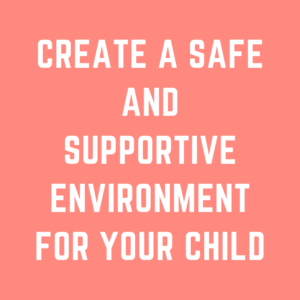Teaching your child to be resilient is an essential skill that can help them navigate life’s challenges and setbacks. Resilience is the ability to bounce back from difficult situations and adapt to change.
As a parent, you can help your child develop resilience through intentional parenting practices.
In this blog, we’ll explore several tips for parents to teach their child resilience.
- Foster a secure attachment
A secure attachment is essential for building resilience in children. Children with a secure attachment to their parents feel safe, loved, and supported, which gives them the confidence to explore and take risks.
To foster a secure attachment, practice responsive parenting, show affection, and consistently provide a safe and predictable environment.
- Teach problem-solving skills
Teaching problem-solving skills can help your child develop resilience by giving them the tools to solve problems independently.
Encourage your child to brainstorm solutions, evaluate the pros and cons, and choose the best course of action. Be patient and supportive as your child learns these skills.
- Encourage optimism
Optimism is an important aspect of resilience. Encourage your child to see challenges as opportunities for growth and learning. Focus on the positives and help your child reframe negative experiences in a more positive light.
- Teach emotional regulation
Teaching your child to regulate their emotions can help them develop resilience by allowing them to manage stress and anxiety.
Encourage your child to identify their emotions and teach them strategies for coping with difficult emotions, such as deep breathing, mindfulness, or physical exercise.
- Model resilience
Children learn by example, so it’s important to model resilience yourself. Share stories of times when you faced challenges and overcame them, and demonstrate positive coping skills when you encounter setbacks.
- Encourage persistence
Encourage your child to persist in the face of challenges. Praise your child’s efforts and hard work, and help them set achievable goals. Encourage your child to keep trying, even when they encounter obstacles or setbacks.
- Practice positive self-talk
Teach your child to use positive self-talk, which can help them develop resilience by building self-confidence and a positive mindset.
Encourage your child to use positive affirmations, such as “I can do this” or “I am strong and capable.”
- Encourage independence
Encourage your child to develop independence by allowing them to make choices and take on age-appropriate responsibilities. This can help your child build confidence, self-esteem, and resilience.
- Foster a growth mindset
A growth mindset is a belief that intelligence and abilities can be developed through hard work and perseverance.
Encourage your child to embrace a growth mindset by praising their efforts, teaching them to embrace challenges, and reinforcing the idea that mistakes are opportunities for learning.
- Teach gratitude
Gratitude is an important aspect of resilience, as it helps children focus on the positives in their lives.
Encourage your child to practice gratitude by keeping a gratitude journal, writing thank-you notes, or taking time each day to reflect on things they are thankful for.
Conclusion
Teaching your child to be resilient is an ongoing process that requires intentional parenting practices.
By fostering a secure attachment, teaching problem-solving skills, encouraging optimism, teaching emotional regulation, modeling resilience, encouraging persistence, practicing positive self-talk, encouraging independence, fostering a growth mindset, and teaching gratitude, you can help your child develop resilience and navigate life’s challenges with confidence and strength.






